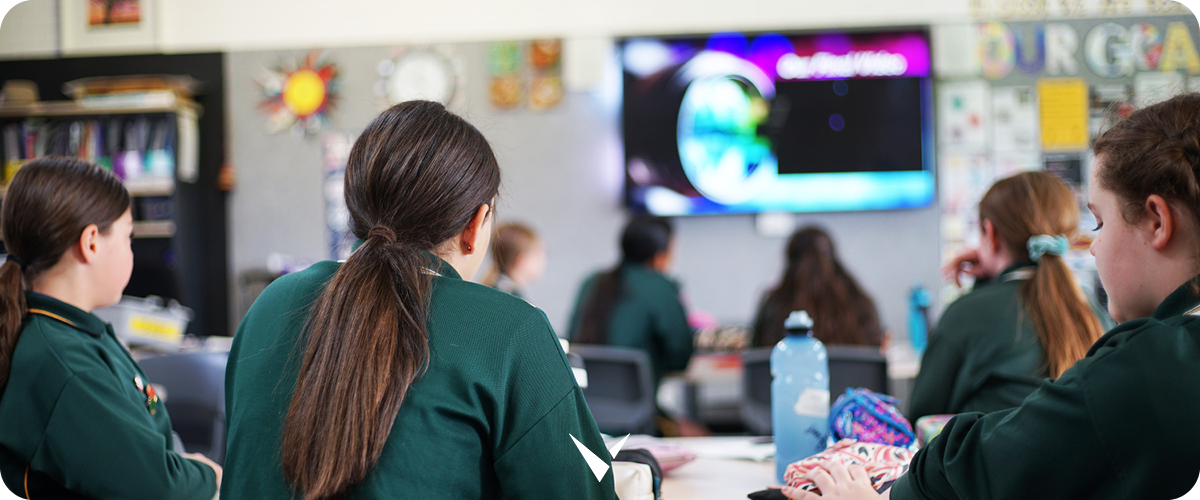
When teachers improve the relationship with their students, overall student success improves in the classroom. According to APA, “Teachers who foster positive relationships with their students create classroom environments more conducive to learning and meet students’ developmental, emotional, and academic needs.”
Teachers have a great responsibility in helping students succeed, and here is where classroom engagement apps can be of much help. Classroom engagement apps become a technological tool to achieve teaching goals but also improve the relationship between teachers and students. Why is this relationship so important? Because as mentioned earlier, a positive teacher-student relationship draws students into the process of learning and promotes their desire to learn.
Educators often look for new pedagogical tools to help them save time and achieve better results for their students and their educational institutions, from planning lectures, finding useful resources, setting assignments, to actually facilitating a class. One of the biggest challenges to these teaching solutions can be available budget and IT support.
IT managers make the districts’ key technology decisions, which are not just business decisions. They require a high degree of technical intelligence and a knowledge of the ways in which educators and staff utilize technology. How can IT administrators and teachers work together to find a solution that is both affordable, sustainable and builds strong teacher-student relationships?
Classroom Engagement Apps Built Strong Teacher-Student Relationships
IT administrators can provide educators with multiple ways to reach a variety of learners and assess student understanding with the aid of education technology. When technology is effectively integrated into the classroom, teachers grow and transform into roles of adviser, content expert, and coach.
Classroom engagement apps assist teaching and learning to become more meaningful and enjoyable, but they also enhance the relationship between teacher and student. As a result of this tool, teachers are able to better interact with students in the classroom and personalize learning for them. The use of technology can therefore be seen as both an IT admin’s tool for providing support to teachers as well as a facilitator of a student-centric learning approach.
Benefits of Classroom Engagement Apps
The effective use of digital learning tools in the classroom increases collaboration and communication which fosters a better teacher-student relationship. If this relationship is strong, it motivates students to become active learners, improving the quality of the educational environment.
Here are some examples of the benefits you, as an IT administrator, can provide students and teachers with classroom engagement apps:
Increased Collaboration and Communication
Educational technology can foster collaboration. The ability to manage the classroom engagement apps remotely makes it simple for IT managers to support stakeholders.
For teachers they can engage with students during lessons, though one-on-one interaction with students. It is possible to give direct feedback to students by having them present their work on the screen, but they can also receive feedback from one another. Teachers can also leave the front of the room and interact with individual students without interrupting their lesson or giving up control of the screen.
Improved Productivity and Efficiency
Teachers can leverage technology to achieve new levels of productivity and implement useful digital tools to expand learning opportunities for students. For example, they can perform other tasks on their device while sharing different media with students.
Some classroom engagement apps are more advanced and provide real-time classroom participation metrics and dashboards that allow IT admins to track stakeholder usage at any given time.
Curiosity Driven by Engaging Content
“Through engaging and educational content, teachers can spark inquisitiveness in students and boost their curiosity,” which has ties to academic success, according to research from the University of California at Berkeley.
Creating engaging content can involve the use of AR, videos, or podcasts. Even the students can create the content. They can film themselves on their devices and then, with the teachers permission, share it to a projector to the whole classroom.
A Practical Example
As an example, let’s consider screen sharing software solutions. This technology allows educators to share content from their device (laptop, tablet, etc.) to any classroom display (TV screen, projector screen, etc.). Students, from their own devices and in a controlled environment, can also share their work with the teacher and ultimately, their classmates.
While students are at their workstations, educators can get out from behind their desk and move about the room, ready to offer guidance and assistance as needed. They are also able to closely monitor progress, so they can intervene if a student is not completing activities as quickly as normal.
As a result of this flexibility, teachers are able to have meaningful conversations with students about issues affecting their learning right away instead of waiting days or even weeks to realize something is amiss. This proximity strengthens their relationship as they are mentoring, facilitating, and coaching students in their learning journey.
Related: Student engagement and academic performance
Tech Tools to Improve Classroom Relationships
Rapport between students and teachers is essential to learning. Students need to make a connection between the knowledge they receive and the person presenting it. District IT departments can provide the educational technology and tools to make teachers’ relationship with students better and keep them engaged in the learning process.
Recognizing the inherent role that technology now plays in education and the potential it has to engage students, what kind of digital tools for the classroom can IT offer to foster teacher-students relationships?
1. Screen Sharing
Screen sharing software allows one student, or several at the same time, to share their work on a display (monitor, projector, TV). When a teacher encourages a student to share their work, it helps students become more confident. Students understand their work is valued, which makes their learning more meaningful.
2. Real-Time Feedback
A teacher can initiate assessments, collect feedback, or take a poll using a classroom engagement app. Real-time feedback for students also helps them maintain a better relationship with teachers. For example, getting this instant overview is a great way to prevent last minute panic when time is running out during an exam or end of term assessments.
3. Gamification
A gamification atmosphere in the classroom has been found to produce favorable results with increased productivity, engagement, and better learning outcomes. With a classroom engagement app, teachers can share online media from a device to a screen while performing other tasks amongst students like a trivia.
Students can also become teachers. By switching the classroom into open access mode, every logged-in student is given presenter-level access, so they’re free to present to their classmates. Teachers can approve content before students share, giving teachers complete control over permissions.
Related: The need for screen sharing software for schools
Selection of the Best Classroom Engagement App
Digital tools offer a great opportunity to tailor lessons to students and free up teachers’ time for individual support while also improving the student-teacher relationship. Using the right platform saves IT departments time and money while improving student participation through real-time communication and access to information.
A platform that encourages better interaction, communication, and engagement will be most effective. Teachers should also be able to leverage the features of the virtual platform, so they can improve the communication, relationship with students, and engagement. Likewise, IT managers should be able to make their jobs easier.
With thousands of digital apps geared for any number of classroom activities, the challenge of finding the appropriate classroom engagement app can be daunting. In your role as IT manager, what are the basic requirements you should consider?
1. Compatibility. Apps should be agnostic. This means that they should work well with the computer operating systems of popular tablets, notebooks, and personal computer brands. It is important to ensure your platform will sync with school hardware and software, including any type of monitor or TV screen.
2. User-friendly. Choose an app that is easy to use or made for non-technical users. For example, automatically save and update information, easy access to documents, and offer assisting prompts when help is needed.
3. Stakeholders accessibility. Teachers and platform administrators should be able to freely manage the platform and access programs in areas other than the classroom.
4. Centralized Control. Some screen mirroring solutions include features that give IT central control over the entire platform. IT can often troubleshoot remotely, avoiding a trip to individual campuses and classrooms.
5. Dashboards and Metrics. Teachers and IT administrators should have access to insightful metrics on consolidated dashboards to allow quick usage metrics and engagement levels.What to improve student-teacher relationship in the classroom without burdening your IT team? Request a demo from Vivi and discover how classroom engagement apps can motivate students to participate, leading to better engagement and higher academic achievements.



